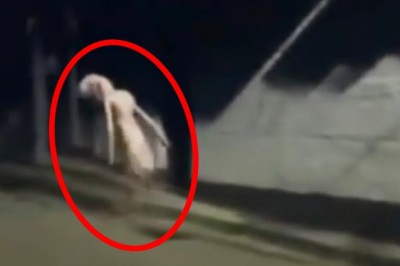
First of its kind in the UAE
Al Zahra Hospital, Sharjah, is proud to announce its first scoliosis correction surgery using 3D printing technology
Sharjah, United Arab Emirates, 22 September 2019, (AETOSWire) : A 16-year old female with a 60-degree adolescent idiopathic scoliosis (AIS) underwent a successful surgery led by Dr Sherief Elsayed, Consultant Spinal Surgeon at Al Zahra Hospital, Sharjah, where a patient-specific 3D printed model of the spine was utilized to aid accuracy. This marks the first time a team in the UAE has undertook such a procedure.
The patient sought medical advice when she noticed that her hips were not symmetrical. After various tests were conducted her spine CT scan was uploaded to a laboratory in the US, who subsequently printed a model of her spine with a 3D printer and created patient-specific screw guides. The Medtronic O-Arm, a type of intra-operative CT scanner, was used to ensure that the screw position was 100 per cent accurate.
Prasanth Manghat, CEO of NMC Health, commented: “we are committed to serving communities by providing the most advanced healthcare. Our comprehensive approach to patient well-being involves offering exceptional care and embracing innovation. We are delighted that our expert surgeon was able to provide this patient with a successful outcome, especially as this was a very complicated procedure.”
Speaking about the breakthrough surgery, Dr Sherief said: “Scoliosis surgery is highly complex, and we are thrilled we were able to use the latest technology to help us perform a safe and effective procedure. The patient was discharged after six nights without any immediate complication. Out team will continue to monitor her to ensure that her spine fuses as intended.”
Dr Sherief added that aside from needing to refrain from sports for a year, she will otherwise be able to lead a completely normal life. “She has a bright future ahead, and will be able to return to most day-to-day activities after six to eight weeks,” he said.
“Furthermore,” said Dr Sherief, “this case has demonstrated that Al Zahra Hospital, Sharjah – and indeed the UAE as a whole – champions teamwork and is at the forefront of innovation.”
What is adolescent idiopathic scoliosis?
Scoliosis is an abnormal curvature of the spine, which is reasonably common, affecting around 3 per cent of the population. With a curve reaching a magnitude as high as the patient operated on by Dr Sherief Elsayed, the likelihood of the curve increasing in size is more than 70 per cent, hence the need for an instrumented correction and fusion using pedicle screws and titanium rods.
The most common type of scoliosis is adolescent idiopathic scoliosis, commonly known as AIS. It is termed adolescent because it typically develops between the ages of 10 and 15, idiopathic because we are not quite sure what causes it, and scoliosis because it is a 3-dimensional curvature of the spine. It is more common in girls.
Scoliosis may cause a visible deformity of the back, asymmetry of the hips, uneven shoulders, or a rib hump (noticed most prominently when bending forwards). Sometimes the curve is very obvious and other times it is barely noticeable. We know that scoliotic curves can get bigger during periods of growth. After growth stops the risk of the curve getting bigger is reduced.
Surgery is considered in cases where there is a risk of the curve progressing or has progressed beyond 40-50˚, depending on which part of the spine is affected. Approximately one in four patients with scoliosis will require surgery.



















Facebook Conversations
Disqus Conversations